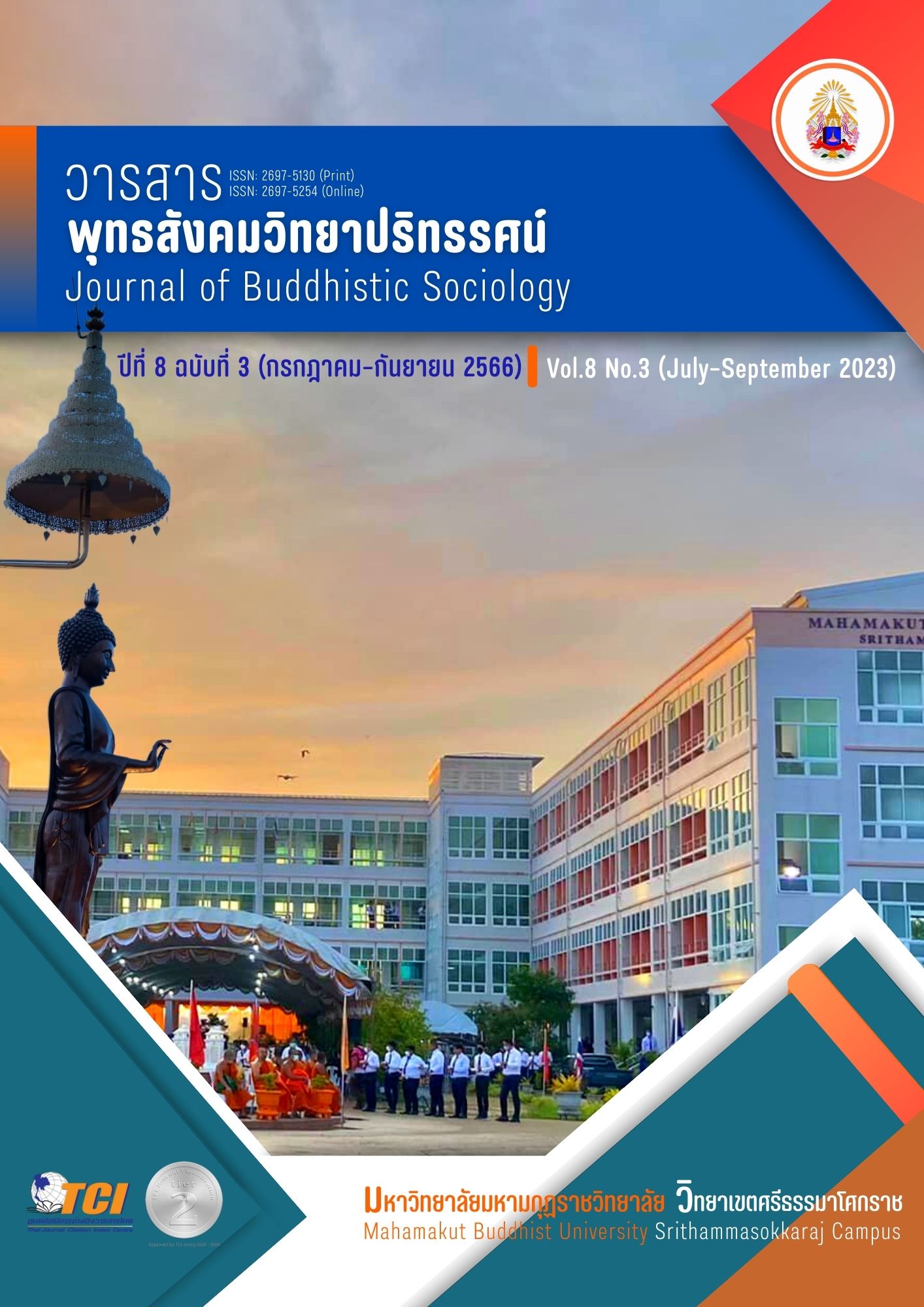AN EVALUATION OF DRIVING PRACHARATH SCHOOL ACCORDING TO THE SUFFICIENCY ECONOMY PHILOSOPHY WATSAMAISUWAN SCHOOL SURATTHANI PRIMARY EDUCATIONAL SERVICE AREA OFFICE 3
Main Article Content
Abstract
This research aimed to evaluate the context, input, process, and output of the Pracharath School Driving Project under the sufficiency economy philosophy of Watsamaisuwan School, Suratthani Primary Educational Service Area Office 3. The research employed the evaluation model of the CIPP. The sample group in this research consisted of the school administrators, teachers, and students of Watsamaisuwan School, 331 people in total. The research instrument was a five-point rating scale questionnaire. The statistics used for data analysis were percentage, mean, and standard deviation.
The research showed that:
1. Context: The evaluation found that the congruence was at the highest level overall. The highest average was 4.82 on the project objectives consistent with the vision, and the project could be carried out successfully. The lowest average was 4.43 for the school environment that was appropriate and conducive to project implementation.
2. Input: The evaluation revealed that the sufficiency and appropriateness were at the highest level overall. The highest average was 4.82 for the topic of the activities in the project that were appropriate and consistent with the objectives. The lowest average was 4.42 for the topic of precise planning determination.
3. Process: The evaluation revealed that the efficiency was at the highest level overall. The highest average was 4.82 for implementing the project activities under the plan and the procedures set out in the project plan. The lowest average was 4.46 for education, meetings for clarification, communication, and public relations to the responsible and related persons to understand the process and how to operate the project.
4. Output: The evaluation found that the effectiveness was at the highest level overall. The highest average was 4.81 for having learning resources in the school. The lowest average was 4.42 for the quality improvement of education management.
Article Details

This work is licensed under a Creative Commons Attribution-NonCommercial-NoDerivatives 4.0 International License.
References
กระทรวงศึกษาธิการ. (2553). พระราชบัญญัติการศึกษาแห่งชาติ พุทธศักราช 2553 (ฉบับที่ 3). กรุงเทพมหานคร: สยามสปอรต์ ซินดิเคท.
จตุพล พิพัฒนกิจเจริญการ. (2552). ประสิทธิภาพในการพัฒนางานที่ประสบความสำเร็จ. เรียกใช้เมื่อ 2 มิถุนายน 2565 จาก www.polpacon7.ru.ac.th/downlood/article/.
บุญชม ศรีสะอาด และบุญส่ง นิลแก้ว. (2535). การอ้างอิงประชากรเมื่อใช้เครื่องมือแบบมาตราส่วนประมาณค่ากับกลุ่มตัวอย่าง. วารสารการวัดผลการศึกษา มหาวิทยาลัยศรีนครินทรวิโรฒมหาสารคาม, 3(1), 23-25.
ปวีณา กันถิน. (2560). ภาวะผู้นำเชิงนวัตกรรมของผู้บริหารสถานศึกษาโรงเรียนประชารัฐ เขตพื้นที่การศึกษาประถมศึกษาเชียงใหม่ เขต 5. วารสารวิชาการ Veridian E-Journal, Silpakorn University ฉบับภาษาไทย สาขามนุษยศาสตร์ สังคมศาสตร์ และศิลปะ, 10(3), 1833-1848.
รุ่ง แก้วแดง. (2553). ปฏิวัติการศึกษาไทย (พิมพ์ครั้งที่ 5). กรุงเทพมหานคร: พิมพ์ดี.
วานิตย์ สิมงาม. (2561). ยุทธศาสตร์ที่ส่งผลต่อการนำนโยบายโรงเรียนประชารัฐสู่การปฏิบัติของโรงเรียนในสังกัดสำนักงานเขตพื้นที่การศึกษาประถมศึกษาอุดรธานี เขต 1. ใน วิทยานิพนธ์ครุศาสตรมหาบัณฑิต สาขาวิชาการบริหารการศึกษา. มหาวิทยาลัยราชภัฏนครราชสีมา.
วิจิตร ว่องวิการณ์. (2557). แนวทางการระดมทรัพยากรทางการศึกษาของโรงเรียนขนาดเล็กในสังกัดสำนักงานเขตพื้นที่การศึกษาประถมศึกษาอุทัยธานี เขต 1. ใน ปริญญาครุศาสตรมหาบัณฑิต สาขาวิชาการบริหารการศึกษา. มหาวิทยาลัยราชภัฏนครสวรรค์.
วิมล ศรีขาว. (2560). ปัจจัยทางการบริหารที่ส่งผลต่อประสิทธิผลของโรงเรียนประชารัฐในภาคตะวันออกเฉียงเหนือตอนบน. ใน วิทยานิพนธ์ครุศาสตรมหาบัณฑิต สาขาวิชาการบริหารการศึกษา. มหาวิทยาลัยราชภัฏอุดรธานี.
สมหวัง พิธิยานุวัฒน์. (2551). รวมบทความทางการประเมินโครงการ (พิมพ์ครั้งที่ 8). กรุงเทพมหานคร: จุฬาลงกรณ์มหาวิทยาลัย.
สาวิตรี แสงสุก. (2563). กระบวนการขับเคลื่อนโรงเรียนประชารัฐสู่ความเป็นเลิศ. วารสารสังคมศาสตร์และมานุษยวิทยาเชิงพุทธ, 5(1), 226-239.
Krejcie, R.V., & Morgan, D.W. (1970). Determining Sample Size for Research Activities. Educational and Psychological Measurement, 30(3), 607-610.
Stufflebeam, D. L. (2003). The CIPP model for evaluation. The international handbook of educational evaluation (Chapter 2). Boston: Kluwer Academic Publishers.


